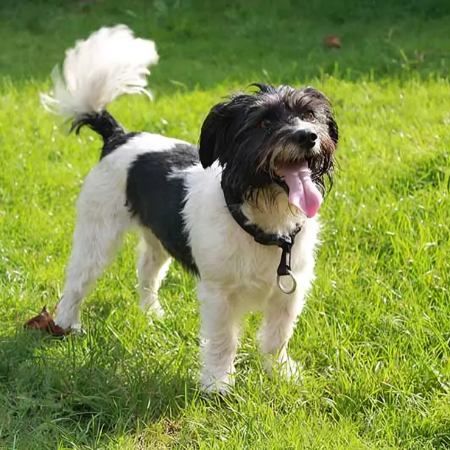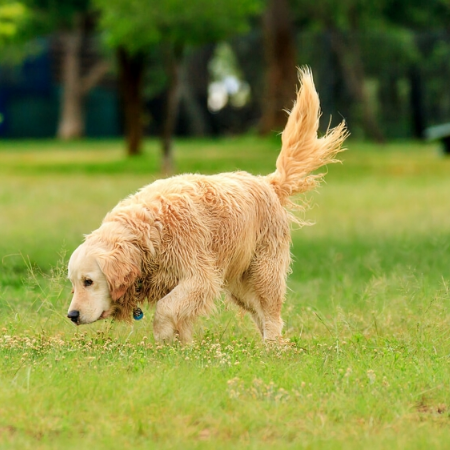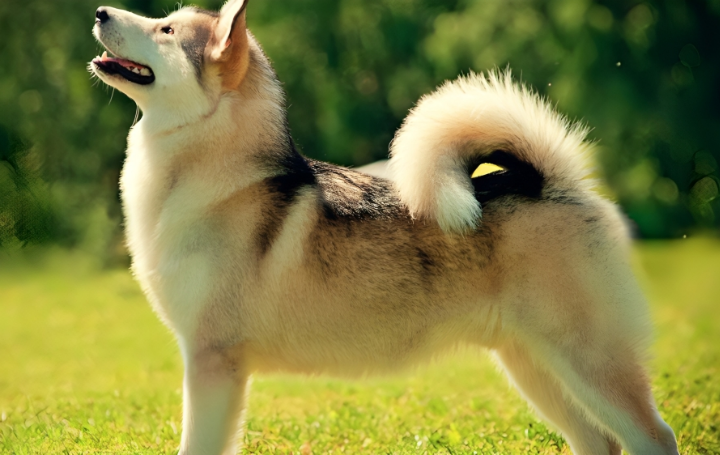The science behind why dogs wag their tails
Since long ago, dogs have been our faithful friends. Part of the reason they’ve grown to be such cherished family members is their capacity for communication. A dog’s tail wagging is one of the most identifiable ways they communicate.
Dogs wag their tails, but for what reason exactly? Because of their deep-rooted social behaviors and physiological structure, this seemingly simple motion is a complicated form of communication.
Communication and Social Interaction of Dogs
Dogs use tail waving to communicate with each other and their feelings. Whereas a slow-pace wag conveys inquisitiveness or doubt, a high, quick wag conveys happiness or excitement. When a dog is alert, it displays its tail straight out to indicate that it is observing something.

A wide, sweeping wag indicates a friendly and welcoming manner, suggesting that the animal is ready for social engagement. Submission or fear can also be inferred from the tail position and wagging speed. Anxiety or submission is indicated by a low, small wag, whereas fear or excessive submission is shown by a tail tucked between the legs.
Understanding these tail movements facilitates owners in understanding their dog’s objectives and emotional condition, improving communication and reinforcing the relationship between them.
Physiological Mechanisms
The muscles at the base of a dog’s tail are responsible for its wagging motion; these muscles contract and relax in response to signals from the brain. The dog’s emotional condition and the signals they want to send are reflected in these motions.
Tail wagging is largely controlled by the autonomic nervous system, which is responsible for controlling involuntary actions. The brain communicates with the muscles in the tail through the neurological system when a dog feels any of the following emotions: excitement, fear, or aggression.
This sets off distinct wagging patterns that reflect the dog’s emotions, allowing them to successfully express their feelings.
Tail Position and Wagging Direction
A dog’s tail-wagging position and direction tell more about its emotional state. Whereas a low, soft wag usually denotes fear or submission, a high, stiff wag may indicate anger or confidence. Pet owners are better able to respond to their dog’s demands and behaviors when they are aware of these details.

According to research, a dog’s tail can indicate a variety of moods depending on which way it is wagging. From the dog’s point of view, wagging more to the right is frequently linked to good feelings like joy or excitement, whereas wagging more to the left can represent bad feelings like fear or anxiety.
Understanding these patterns improves communication and fortifies the relationship between owners and their dogs.
Social and Evolutionary Context
Tail wagging is a vital part of social behavior in groups in the wild for wolves, the ancestors of domestic dogs. Establishing structures, expressing goals, and upholding relationships with others were all helped by this communication.
This is a behavior that domestic dogs have inherited and modified for social interactions with people and other dogs. After thousands of years of domestication, dogs have mastered efficiently communicating with humans through tail-wagging behaviors.
Dogs and their human friends have a closer link since a wagging tail frequently indicates friendliness, happiness, or excitement for play. Gaining an understanding of these signals improves communication and fortifies the bond between dog and owner.
What did we learn?
Dog’s complicated tail-wagging behavior, which is essential for communication, reflects a variety of intentions, moods, and social cues derived from their physiology and historical background. High, quick wags are a sign of joy; low, languid wags are a sign of fear or compliance.

Wagging also expresses emotions in terms of direction; wags from the right side indicate happiness and wags from the left side indicate concern. This is a behavior that dogs have carried down from their ancestors and use to communicate with people and other canines.
Dog owners can create a stronger, more harmonious relationship with their pets by being able to read their emotions and respond to their needs more effectively by being aware of these subtleties.
Doglime for more dog-related information.
Tags










